The mystery and the irresistible beauty of nacre clouds
Nacreous clouds are one of the most beautiful clouds to remove anyone's eyes when seen. But this is a rare "toxic" natural phenomenon that destroys our atmosphere.
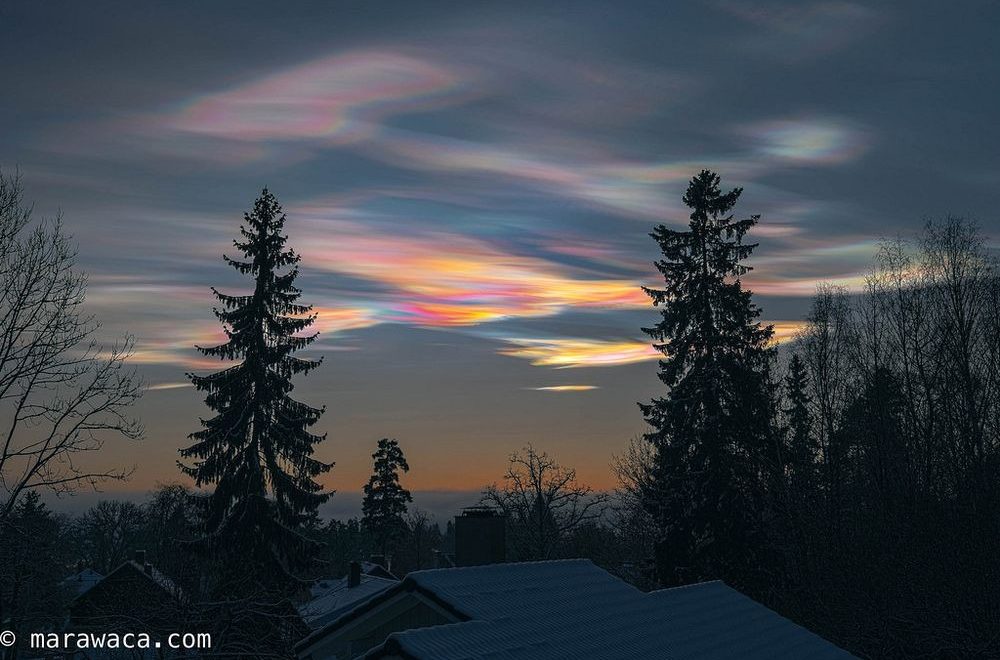
Nacreous clouds, nacre clouds or polar stratospheric clouds (abbreviated: PSC) can only be seen in the winter, at an altitude of 15,000 - 25,000 m.
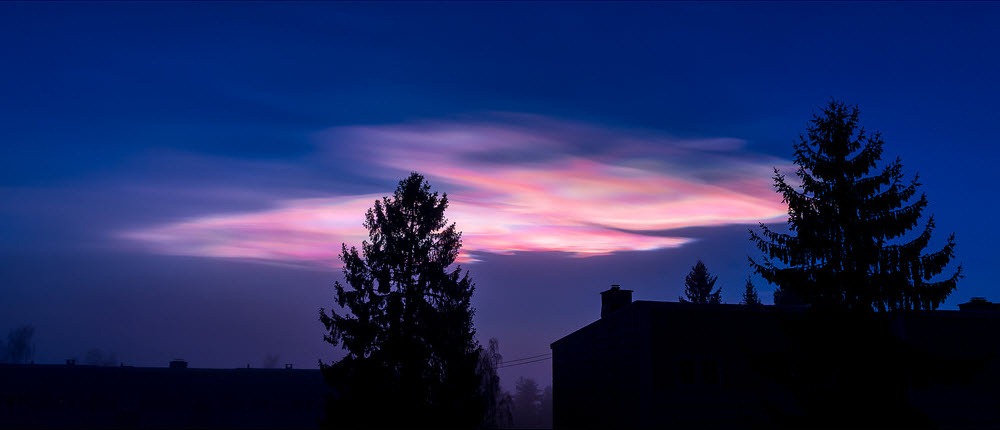
Only some places on earth can see nacre clouds such as Iceland, Northern Canada, Alaska, Northern Europe and Antarctic countries.After sunset or before dawn, fuzzy clouds with vivid colors can form on the dark sunset sky.
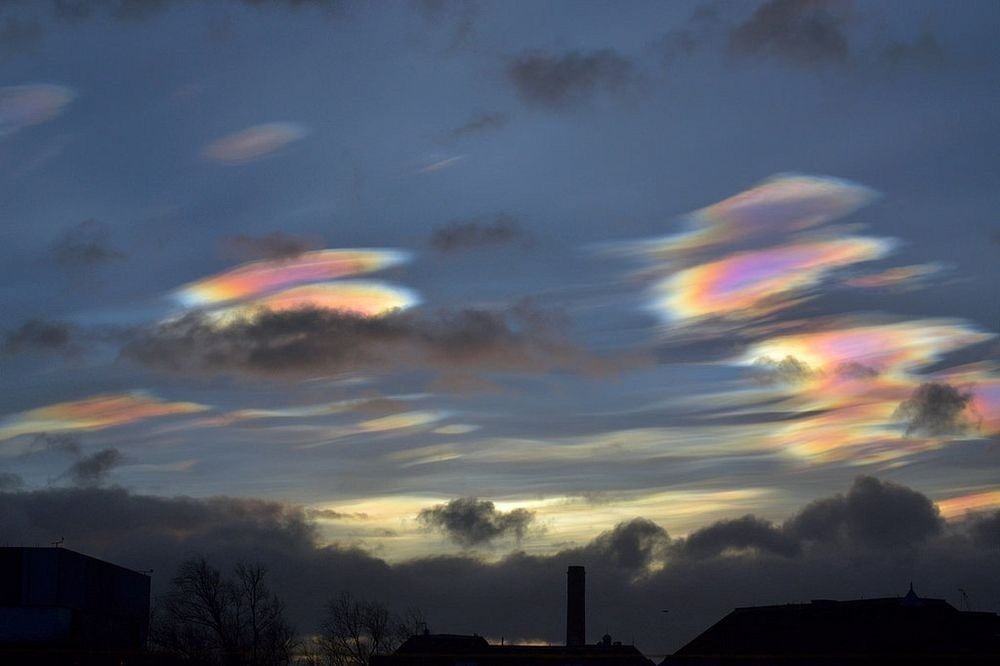
Nacreous clouds are made up of a natural mixture of water and nitric acid coming from industrial emissions.

In the past, we used chlorofluorocarbon (CFC) substances in spray cans and cold heat.This chemical has been removed but still exists today.After a few years, the CFC evaporates and moves through the troposphere to the stratosphere.Here, they are decomposed by ultraviolet light and produce free chlorine atoms that destroy the ozone layer, the shield needed to protect us from the sun's harmful rays.
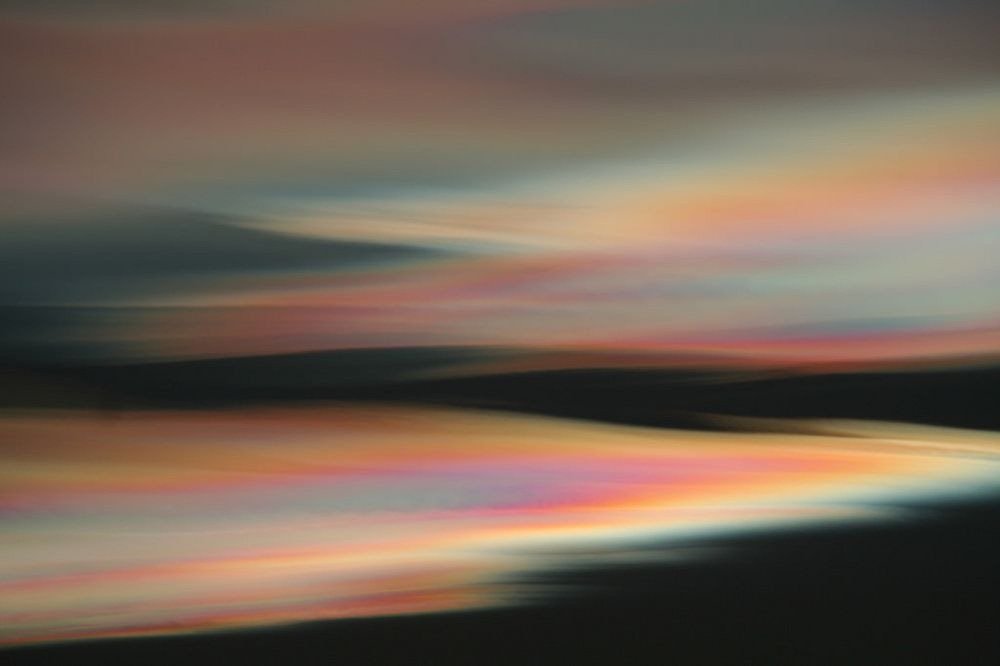
Winter in extremely long regions and with little sunlight, low temperature ants let nacre clouds begin to form in the stratosphere even though the air is very dry.
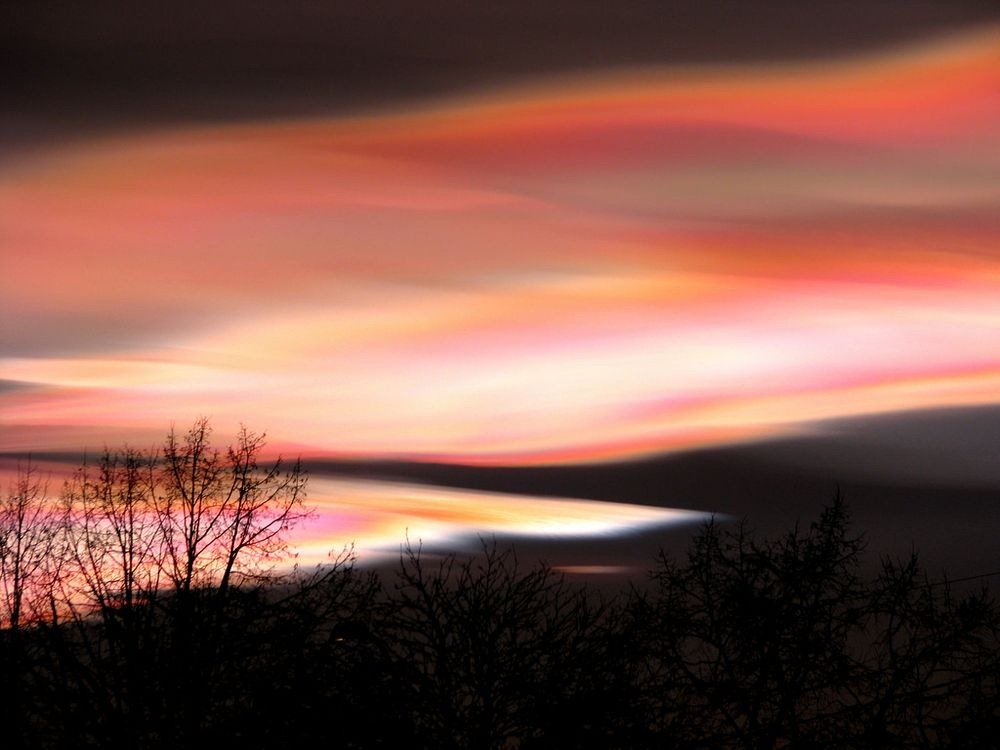
Nacre clouds produce frozen crystals of water, nitric acid and sulfuric acid sometimes, providing an ideal surface for chemical reactions to occur to release free chlorine atoms back gas.
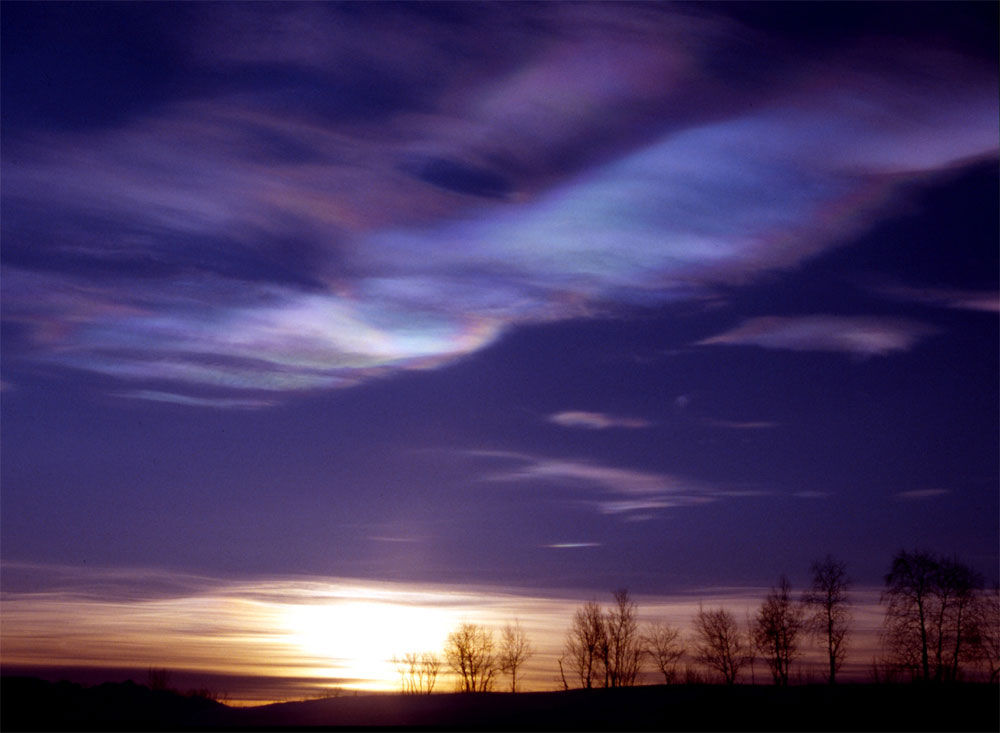
The presence of sunlight is essential to balance, so this only happens in the spring when returning, when sunlight reaches the polar regions, and ultraviolet light will disrupt the link between chlorine atoms.This process can only be stopped once nacre clouds are destroyed by low-latitude air currents.
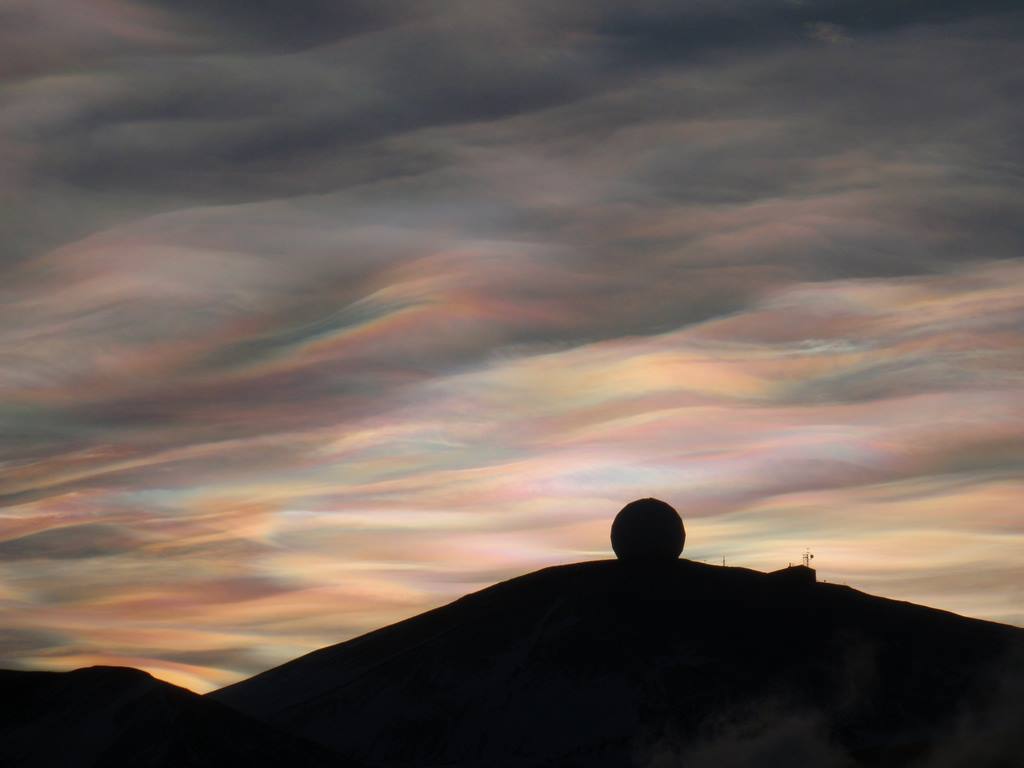
Such chemical reactions cannot occur anywhere else in the atmosphere.
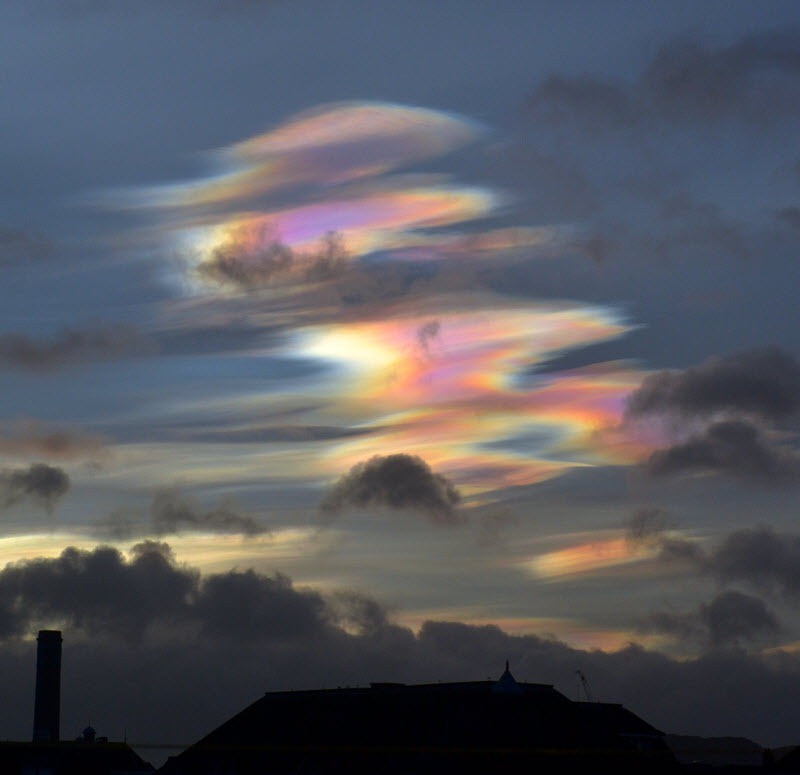
This explains why the size of the ozone layer in the polar regions is often larger than in other places.
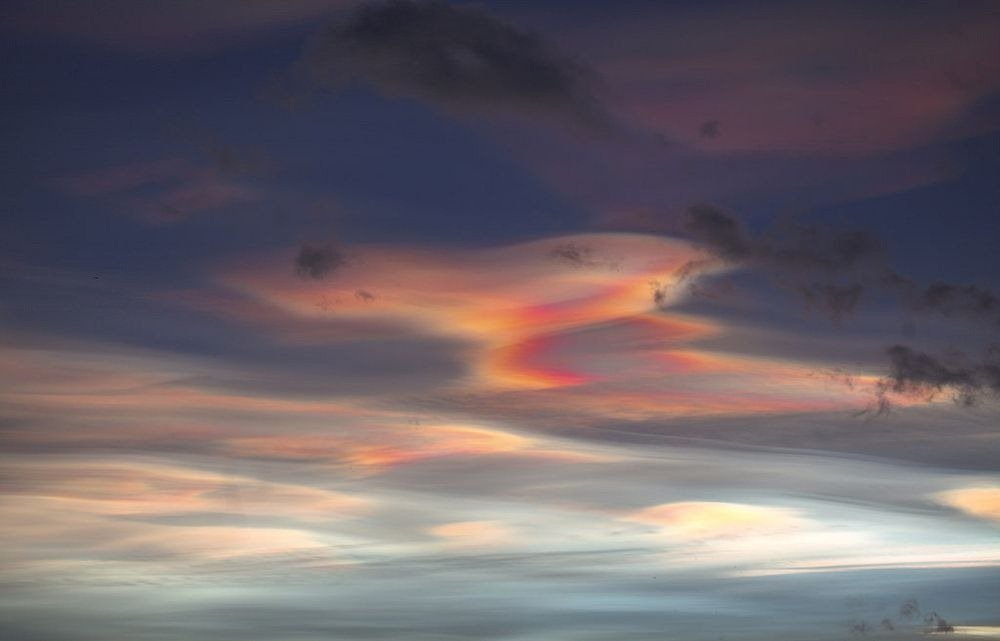
In addition, nacre clouds often appear more in the southern hemisphere.Thus, the ozone layer in the southernmost is more exhausted than the north pole.
You should read it
- Cloud like scary cannons appeared in the sky of Japan
- The width and path of radioactive clouds if North Korea tests the Pacific thermonuclear bomb
- 24 impressive images of colorful clouds of the Carina Nebula
- Clouds on Neptune may be created by the Sun
- Strange weather phenomena can only be seen in the universe
- 'Sky monster' is real!
- 8 mysterious natural phenomena that make scientists 'crazy'
- It is ridiculous to see the images look over, but they are 100% not editable
May be interested
- Marvel at the incredible beauty of chemical reactions
 when viewed from a close-up perspective, chemical reactions have a beauty that is hard to expect.
when viewed from a close-up perspective, chemical reactions have a beauty that is hard to expect. - Beauty with summer fruits
 very simple homemade beauty recipes from popular summer fruits
very simple homemade beauty recipes from popular summer fruits - The secret to beautifying the skin from a scientific perspective
 the bright side newspaper has conducted research on beauty issues from a scientific perspective and offers extremely useful information from physicists. here are the beauty tips from a scientific perspective.
the bright side newspaper has conducted research on beauty issues from a scientific perspective and offers extremely useful information from physicists. here are the beauty tips from a scientific perspective. - Clouds on Neptune may be created by the Sun
 orbiting nearly 3 million miles from the sun, neptune is distant from earth.
orbiting nearly 3 million miles from the sun, neptune is distant from earth. - The mystery has no solution - 40 years without sleep due to bullets shot through the head
 this is one of the most mysterious cases of world medicine. so far, this mystery has yet to be solved.
this is one of the most mysterious cases of world medicine. so far, this mystery has yet to be solved. - The 2000-year mystery has yet to be solved for the giant drawings on the Nazca Plateau
 appearing from 2000 years ago, the strange lines called nazca lines (nazca lines) are considered one of the most mysterious and confusing mysteries in human history.
appearing from 2000 years ago, the strange lines called nazca lines (nazca lines) are considered one of the most mysterious and confusing mysteries in human history. - 10 world famous abandoned houses
 abandoned houses with wild beauty, mystery and horror attract tourists from everywhere to experience.
abandoned houses with wild beauty, mystery and horror attract tourists from everywhere to experience. - 15 simple beauty tips for women
 let's find out 15 simple beauty tips for women!
let's find out 15 simple beauty tips for women! - The horrific 'ghost submarine' disaster during World War I, the biggest maritime secret in history
 the german ub-65 submarine exploded nearly a century ago but the cause of this puzzling accident is still a question mark so far. what happened to the submarine that was considered a terror, a nightmare for many ships on the ocean?
the german ub-65 submarine exploded nearly a century ago but the cause of this puzzling accident is still a question mark so far. what happened to the submarine that was considered a terror, a nightmare for many ships on the ocean? - 'Eternal fire' mystery has not been deciphered
 the fire is hidden behind the eternal flame waterfall in chestnut ridge park, new york, which has burned hundreds and even thousands of years. regardless of the winter or summer, the 9m waterfall flows year-round or ice, the fire has yet to turn off.
the fire is hidden behind the eternal flame waterfall in chestnut ridge park, new york, which has burned hundreds and even thousands of years. regardless of the winter or summer, the 9m waterfall flows year-round or ice, the fire has yet to turn off.










 These are images of Earth from above that you've never seen before
These are images of Earth from above that you've never seen before The set of illustrations 'This world has only two types of people' by the Portuguese artist
The set of illustrations 'This world has only two types of people' by the Portuguese artist Unique house inspired by grass pipes
Unique house inspired by grass pipes Take a look at the same location, how the two pictures were taken by different professional and amateur photographers!
Take a look at the same location, how the two pictures were taken by different professional and amateur photographers! 17 stunning photographs taken under a microscope reveal a whole new world
17 stunning photographs taken under a microscope reveal a whole new world Photos of the 'Old Earth and Now': How has the Earth changed over the last 100 years?
Photos of the 'Old Earth and Now': How has the Earth changed over the last 100 years?